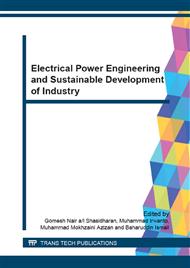p.407
p.412
p.417
p.425
p.430
p.435
p.440
p.445
p.450
Efficient Power Generation for Smart Homes Based Titanium Dioxide (TiO2)
Abstract:
Smart home uses a combination of the renewable energy power resources, the use of power generation from solar cells based on titanium dioxide (TiO2) which acts as the only type which produces an efficient solar cell power to obtain the electricity to recharge the standby storage device from the sunlight. The thin film of Titanium dioxide is synthesized by the sol-gel spin coating techniques at 2000 rpm on the glass. The films have a constant thickness of ~240nm. The annealing process consists of 150°C, 250°C and 350°C. The study of the absorbance and the wavelength values are important. At this condition, for the solar cell, the wavelength is around ~280nm to ~330nm. As the temperature of annealing increases the higher absorbance would be produced. The refractive index of TiO2 film is estimated at different annealing temperatures and it increases with the increasing of the annealing temperature. The application is suitable to smart home design. The dynamic output voltage obtained from the solar cells is interfaced with other circuitry such as inverters and interface charging circuit in order to inject the generated power into the standby storage device. The calculated result of this application is efficient to reduce the electrical bill by almost 30% of its original value.
Info:
Periodical:
Pages:
430-434
Citation:
Online since:
September 2015
Keywords:
Price:
Сopyright:
© 2015 Trans Tech Publications Ltd. All Rights Reserved
Share:
Citation:


